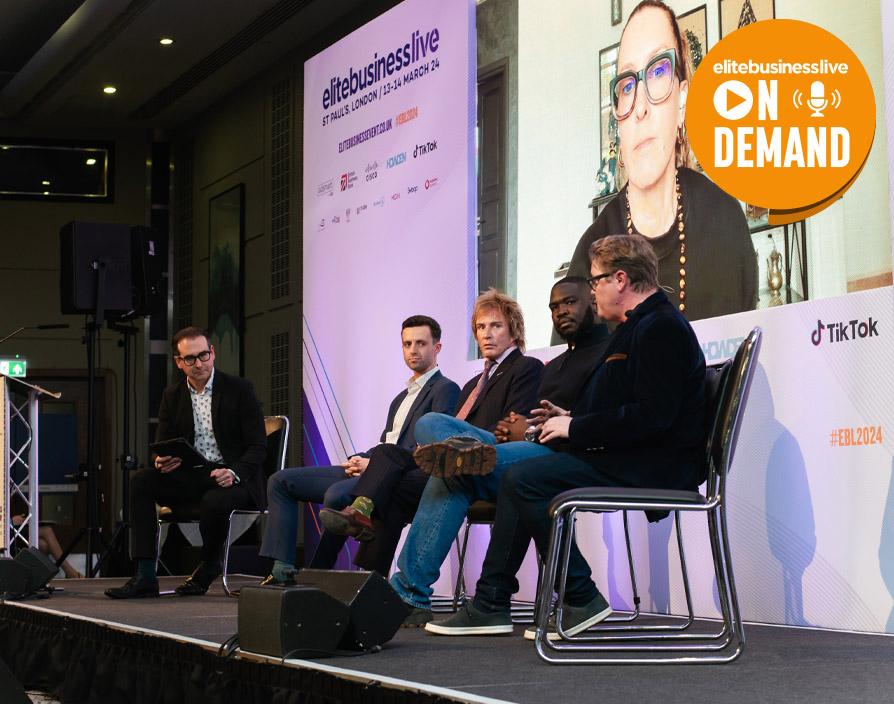The rise in remote working during the pandemic has transformed the way businesses run. Hybrid working is more common than ever before, with many companies now offering remote roles. While some praise the change as a positive for employers and employees, others are less convinced. Many businesses embrace hybrid working, while others have since requested workers to return to the office five days a week. Charlie Mullins OBE, founder of Pimlico Plumbers, Tamara Littleton, Founder & CEO of The Social Element Agency, Milimo Banji, Founder & CEO of TapIn, Shaa Wasmund MBE, Sunday Times best-selling author and serial entrepreneur and Charlie Rogers, founder of Undefinable Community and Founders’ Associate at The Portfolio Collective took to the stage for the Talent Panel discussion at Elite Business Live 2024 as they discussed their opinions on remote working, and how this rise is shaping the future of our workforce.
What is the future of work? Shaa spoke about the rise of side hustles and how many employees are opting for multiple income streams rather than just a traditional 9-5 job. “I think the future of work is demonstrating hyper flexibility,” Shaa said. “Employees are having side hustles, most people will do more than one thing and the concept of having a job for life is done and dusted. The future is that people will have multiple careers, not just multiple jobs. They’ll have multiple careers in their lifetime. And potentially they’ll have multiple careers at the same time.”
Charlie Mullins aired his views on the potential pitfalls of working from home. He said home working does not allow youngsters to learn from mentors and that too much flexibility can mean less productivity. “This nonsense of working from home is just destroying the economy, destroying youngsters’ future and putting more people out of work…’ Charlie said. “And I think there will be fewer jobs available because so many businesses will close down. I mean, who in their right mind would open up a business knowing their staff are going to be dictating and telling you when they want to get up for work? People sitting in their pyjamas all day is not acceptable.”
Milimo chimed in with a similar perspective. Milimo faced several challenges running a fully remote business. Not having a physical office space means employees struggle to connect and socialise, and it also makes mentoring difficult, he said.
“Two years ago, our team went fully remote,” Milimo told the audience. “My team is made up of majority Gen Z workers… We’ve learned over the last two years of being remote that there are benefits to building remote team flexibility and autonomy of work. However, in the last six months, there have been some challenges that we’re facing. We don’t have those moments where people can come in and have important conversations. From a learning and development perspective, we’re also finding that it’s even more difficult for our team to have access to mentorship.”
To address these issues, Milimo gathers his employees once a month to bond and connect. “Once a month we meet in a physical location,” he added. “This lets everyone come together to share ideas and have a couple of words with each other.”
Remote working doesn’t have to be isolating. Tamara believes that you can create team unity by taking initiatives to bring your employees together. “There is this middle ground,” she said. “I have noticed that when your workers become more isolated and maybe perhaps more socially anxious, it is important to get them together. And so there is that balance. We use Google Chat for example, so people from different time zones can be connected to what’s going on. Instead of having one headquarters that is a physical office, we do it online and employees have access to hubs. I’m also a great believer in getting our workers together for a meal. The money we save on office space and real estate, we can invest in having a great time. My team and I have been to Chicago. This week I’m meeting ten of my teammates for an awards ceremony. We try to connect people every few months to bring that energy back.”
Charlie Rogers explained the positives of remote working. While physical work may still require employees to be on-site, remote roles can allow you to hire talent that otherwise wouldn’t be able to come to the office due to their location or other commitments.
“It’s not the one-size-fits-all approach,” Charlie explained. “I think we need to understand that one aspect of remote working is that we are engaging rare talent. You can engage people that otherwise couldn’t work. For example, a mother who works part-time and is looking after her kid most days. Perhaps a remote role that allows her to work three hours a day would be suitable and you would employ a skilled worker who otherwise wouldn’t be able to work. We also need to appreciate that there is knowledge work versus physical work, and how different they are as well.”
Share via:








































